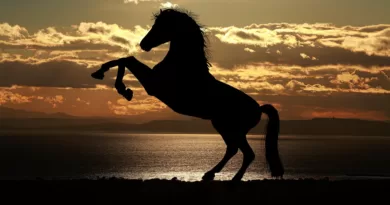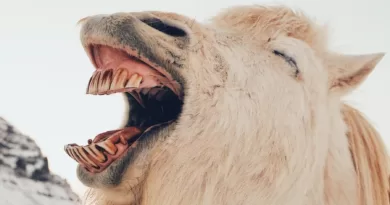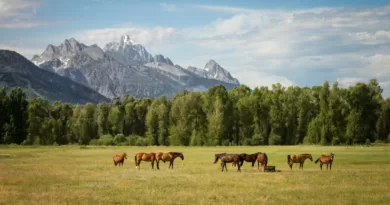How Often Do Horses Come in Heat
The Reproductive Cycle of Horses
Horses, like many other mammals, have a reproductive cycle that determines when they are able to conceive and reproduce. This cycle is known as estrus or heat and is characterized by specific changes in the mare’s behavior, physiology, and reproductive tract. Understanding the different phases of the reproductive cycle is crucial for horse owners, breeders, and veterinarians.
The reproductive cycle of horses begins with the onset of estrus, which is the period when the mare is sexually receptive and most likely to conceive. This is followed by ovulation, which is the release of an egg from the mare’s ovaries. After ovulation, the mare enters a period called diestrus, where she is no longer sexually receptive and prepares her uterus to potentially support a pregnancy. If the mare does not become pregnant, she will eventually return to estrus and the cycle will continue. It is important to note that the length and regularity of the reproductive cycle can vary among individual mares and even among different horse breeds.
Understanding Estrus in Mares
The estrus cycle, commonly referred to as “heat,” is a natural reproductive process that mares go through. Understanding estrus in mares is crucial for breeders, veterinarians, and horse owners alike. During this cycle, mares exhibit behavioral and physical changes that signify their readiness to mate and potentially conceive.
One of the primary signs of estrus in mares is behavioral changes. They may become more vocal, showing signs of restlessness, and exhibiting increased interest in stallions. Some mares may even demonstrate a “winking” of the vulva, which is the opening of the reproductive tract. Alongside these behavioral adjustments, there are also physical changes that occur during estrus. Mares may experience an increase in vaginal discharge and frequent urination. Additionally, the vulva may appear more relaxed and swollen. Understanding and recognizing these signs can help horse owners properly manage their mares’ reproductive cycle and make informed decisions about breeding.
Signs and Symptoms of Heat in Horses
When a mare is in heat, there are several signs and symptoms that can indicate her reproductive cycle. One common sign is increased vocalization, with the mare often neighing or whinnying more than usual. Additionally, she may exhibit a more excitable and restless behavior, pacing and constantly moving around her environment. In some cases, mares in heat may also display aggressive behavior towards other horses or objects, such as biting or kicking.
Another noticeable symptom of heat is an increase in urination frequency. Mares in heat tend to urinate more frequently and may even squat and spread their hind legs to urinate, which is different from their usual posture. In addition to increased urination, mares in heat may also have a swollen or softened vulva. The vulva can appear larger, more relaxed, and possibly with a glossy or moist appearance. These visible signs and behavioral changes in mares can help horse owners and breeders identify when a mare is in heat and ready for breeding.
Factors Affecting the Frequency of Estrus
The frequency of estrus in mares can be influenced by several factors. One significant factor affecting the frequency of estrus is age. Young mares, typically around two to four years old, may have more irregular heat cycles compared to older, more mature mares. Additionally, the overall health and condition of the mare can impact the frequency of estrus. Mares that are in optimal physical health and maintain an appropriate body condition are more likely to exhibit regular heat cycles.
Another factor that can affect the frequency of estrus in mares is the presence of a stallion. Mares that are exposed to a stallion, whether through natural breeding or by housing them in close proximity, tend to have more regular heat cycles. This is because the presence of a stallion can stimulate hormone production and encourage mares to come into estrus more regularly.
Environmental factors such as daylight duration and temperature fluctuations can also play a role in the frequency of estrus. Mares tend to exhibit a higher frequency of heat cycles during the spring and summer months when the days are longer and ambient temperatures are warmer. Conversely, during the fall and winter months, when daylight hours shorten and temperatures drop, mares may have fewer heat cycles or even enter a period of reproductive quiescence.
Understanding the factors that can affect the frequency of estrus in mares is important for horse owners and breeders. By considering these factors and providing appropriate management techniques, such as proper nutrition, veterinary care, and controlled breeding environments, it is possible to optimize the reproductive cycle of mares and improve breeding success rates.
Typical Length of a Mare’s Heat Cycle
The typical length of a mare’s heat cycle can vary from one individual to another. On average, a mare’s heat cycle usually lasts for about 21 days. However, it is important to note that some mares may have shorter or longer cycles, ranging from 18 to 24 days.
During this time, the mare goes through different phases. The first phase, known as the proestrus phase, is characterized by the gradual development of the follicles in the ovaries. This phase can last for about 4 to 7 days. Following this, the mare enters the estrus phase, commonly known as “heat.” This is the period when the mare becomes reproductive and shows signs of receptivity towards a stallion. The estrus phase typically lasts for about 5 to 7 days. Finally, the mare moves into the diestrus phase, which is a period of sexual inactivity that can last for around 14 to 16 days if the mare is not successfully bred. Understanding the length and phases of a mare’s heat cycle is crucial for successful breeding and reproductive management.
Variations in Heat Cycles Among Different Breeds
The length and frequency of heat cycles can vary among different horse breeds. Some breeds, such as Thoroughbreds and Quarter Horses, tend to have shorter heat cycles that last around 21 days. On the other hand, certain pony breeds and draft horses may have longer heat cycles, lasting up to 28 days.
Moreover, the intensity of heat behavior can also differ across breeds. While some mares may show pronounced signs of heat, such as frequent urination, tail raising, and vocalization, other breeds may display more subtle behavioral changes. These variations in heat cycles among different breeds can make it important for horse owners and breeders to understand the normal patterns and behaviors of each specific breed in order to accurately detect and manage their mare’s reproductive cycle.
Seasonal Influence on Estrus in Horses
The seasonal influence on the estrus cycle in horses is a fascinating phenomenon that has been observed and studied for years. In many temperate regions, mares tend to exhibit a seasonal pattern of estrus, with the onset of spring signaling the start of their breeding season. This is believed to be a natural adaptation, as horses, like other animals, have evolved to reproduce during times when environmental conditions are most favorable for rearing offspring.
During the winter months, when daylight hours are shorter and temperatures drop, mares typically enter a period of reproductive inactivity, known as anestrus. This phase is characterized by a lack of visible estrus behaviors and a shutdown in the mare’s reproductive hormone production. As the days start to lengthen in early spring, however, mares undergo a hormonal shift, triggering the resumption of their estrus cycles. This transition from anestrus to estrus is influenced by the increased exposure to natural light, which stimulates the production of hormones necessary for ovulation and fertility.
Research has shown that this seasonal influence on estrus in horses can vary depending on geographic location and breed. In some regions closer to the equator, where there is less variation in daylight hours throughout the year, mares may not exhibit such a distinct seasonal pattern in their estrus cycles. Additionally, certain breeds, such as those from more tropical climates, may have a reduced seasonality in their reproductive cycles compared to breeds originating from temperate zones.
Understanding the seasonal influence on estrus in horses is crucial for breeders and owners who want to optimize their chances of successful breeding. By monitoring changes in daylight hours and closely observing the behaviors and physical signs of estrus in mares, horse enthusiasts can identify the best time to introduce a stallion for breeding purposes. Furthermore, being aware of the potential variations in estrus cycles among different breeds and geographic locations allows for more precise management and care during these critical reproductive periods.
Identifying the Best Time for Breeding
The successful breeding of horses depends greatly on identifying the optimal time for mating. This requires careful observation and knowledge of the mare’s estrus cycle. One key indicator is the presence of physical signs such as increased vaginal discharge and swelling of the vulva. Additionally, behavioral changes can provide valuable insights into the mare’s fertility status. Paying close attention to her eagerness to be mounted by other horses or her receptiveness to a stallion’s advances can be strong indicators of her readiness to breed. By monitoring these physical and behavioral cues, breeders can significantly increase the chances of a successful mating.
Timing is crucial, as breeding too early or too late in the mare’s heat cycle can significantly decrease the chances of conception. It is generally recommended to breed a mare within 24 to 48 hours after she has ovulated. This is because the mare’s eggs are viable for only a short period of time, and it is during this window that fertilization is most likely to occur. To pinpoint the exact time of ovulation, veterinarians often employ various techniques, such as ultrasound imaging or hormone testing. By accurately identifying the best time for breeding, breeders can maximize the chances of a successful pregnancy and ultimately ensure the continuation of desirable equine traits and bloodlines.
Managing Heat Cycles in Performance Horses
Managing heat cycles in performance horses is a crucial aspect of their overall care and training. Performance horses, whether they are involved in racing, show jumping, or dressage, rely on their physical and mental capabilities to excel in their respective disciplines. Heat cycles can significantly impact a mare’s focus, energy levels, and performance, making it essential for owners and trainers to understand and address these fluctuations in a proactive manner.
One of the key strategies for managing heat cycles in performance horses is through hormone therapy. This involves the use of medications such as prostaglandins to regulate and control the mare’s reproductive cycle. By administering these hormones at specific times, horse owners and trainers can manipulate the mare’s estrus cycle, ensuring that she is at her optimal performance level during competitions and training sessions. However, it is crucial to note that hormone therapy should only be undertaken under the guidance and supervision of a veterinarian to ensure the safety and well-being of the horse.
Health Concerns and Care During Estrus Periods
During a mare’s estrus period, there are certain health concerns that may arise and require special care. One of the key concerns is the risk of developing infections, as the hormonal changes during estrus can cause the mare’s reproductive tract to become more susceptible. It is important for horse owners and caretakers to closely monitor the mare’s overall health and cleanliness during this time, and to promptly address any signs of infection such as discharge or excessive swelling.
Furthermore, behavioral changes can also occur during estrus, which may affect the mare’s demeanor and interactions with other horses. Some mares might become more irritable or agitated, while others may exhibit heightened sensitivity or discomfort. Providing a calm and stress-free environment can help alleviate these behavioral issues. Additionally, regular exercise and turnout can also be beneficial for mares during estrus, as physical activity can help release endorphins and reduce anxiety. By understanding these health concerns and implementing appropriate care strategies, horse owners can ensure the well-being of their mares during their estrus periods.
What is the reproductive cycle of horses?
The reproductive cycle of horses, also known as the estrus cycle, refers to the period of time in which a mare is sexually receptive and can potentially conceive.
How can I understand estrus in mares?
Estrus in mares is characterized by behavioral and physical changes, such as increased restlessness, frequent urination, and a swollen vulva. It is important to observe these signs to identify when a mare is in heat.
What are the signs and symptoms of heat in horses?
Signs of heat in horses include increased vocalization, flirtatious behavior, winking of the vulva, and a willingness to be mounted by other horses. These signs indicate that a mare is in estrus.
What factors can affect the frequency of estrus in mares?
Factors such as age, season, health, and management practices can influence the frequency of estrus in mares. Additionally, the presence of a stallion can trigger or suppress estrus in a mare.
What is the typical length of a mare’s heat cycle?
The average length of a mare’s heat cycle is about 21 days. However, this can vary between individuals and may range from 18 to 24 days.
Do different horse breeds have variations in their heat cycles?
Yes, there can be variations in heat cycles among different horse breeds. Some breeds may have shorter or longer estrus periods, or they may exhibit different behavioral signs of heat.
How does seasonal influence affect estrus in horses?
Seasonal influence can have an impact on the intensity and regularity of estrus in mares. Most mares experience a longer period of anestrus, or no heat, during the winter months, and have more regular cycles during the spring and summer.
How can I identify the best time for breeding my mare?
To determine the best time for breeding, it is recommended to monitor the mare’s heat cycles closely and consult with a veterinarian. Various methods, such as hormonal testing or ultrasound evaluation, can help determine the optimal time for breeding.
How can I manage heat cycles in performance horses?
Managing heat cycles in performance horses can involve the use of hormonal treatments or reproductive techniques to regulate estrus and prevent potential disruptions to training or competition schedules. Consulting with a veterinarian is crucial for developing an appropriate management plan.
What are some health concerns and care considerations during estrus periods?
During estrus periods, mares may require additional care and attention to maintain their reproductive health. This may include regular veterinary check-ups, proper hygiene, and monitoring for any signs of discomfort or reproductive issues.




